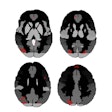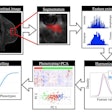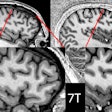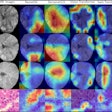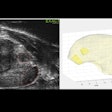Despite a newspaper campaign that encouraged readers to send in coupons protesting the omission of Fonar founder Raymond Damadian from the 2003 Nobel Prize in medicine, virtually no one thinks the Nobel committee will alter the award for discoveries in MRI. Many do believe that politics, specifically Damadian's past protestations, may have tipped the scales against him.
It happened in 1985, at the annual meeting of the then-Society of Magnetic Resonance in Medicine, yet Gary Fullerton, Ph.D., recalls the scene clearly and the quote exactly.
Organizers of the London meeting had invited Dr. Raymond Damadian to serve as moderator of the plenary session -- an attempt to bring the mercurial MR pioneer-turned-businessman "back into the scientific fold," Fullerton said.
Damadian, however, stunned the audience of scientists and MR practitioners by walking to the center of the stage and giving a speech that -- depending on one's perspective -- was either an attempt to correct the historical record or an unabashed attack on fellow MR researcher Paul Lauterbur, Ph.D.
The coup de grâce was Damadian’s closing intonement: "Brutus is an honorable man; Paul Lauterbur is not." Nearly 20 years later, Damadian’s twist on the famous phrase from Shakespeare’s "Julius Caesar" -- comparing Lauterbur to a literal backstabber -- still resonates with Fullerton.
"Can you imagine the two of them on the same stage accepting the Nobel Prize?" asked Fullerton, now head of the radiologic sciences department at the University of Texas Health Sciences Center in San Antonio and editor emeritus of the Journal of Magnetic Resonance Imaging. "There would have been blood flowing."
Instead, of course, Lauterbur will appear in Stockholm alongside Sir Peter Mansfield as they accept this year’s joint Nobel Prize in medicine for "their discoveries concerning magnetic resonance imaging." Despite a U.S. newspaper campaign that encouraged readers to send in coupons protesting the omission of Damadian, virtually no one thinks the Nobel committee at the Karolinska Institutet in Stockholm that determined the prize will alter the award.
Deserving recognition?
Whether Damadian deserved the award as well is obviously subject to debate. Those who support Damadian’s position cite two documents as primary evidence:
- Damadian’s first article ("Tumor detection by nuclear magnetic resonance," Science March 1971, Vol. 171, pp. 1151-1153), which appeared two years before Lauterbur’s first article ("Image formation by induced local interactions: examples employing nuclear magnetic resonance," Nature, March 1973, vol. 242, pp. 190-191), and
- The 1972 patent issued to Damadian, which formed the basis for court decisions in his favor that included a $62 million judgment against GE in 1997 and unspecified settlements with other manufacturers of MR scanners.
Among those who think Damadian should have received the Nobel Prize is Dr. William Bradley, chairman of the radiology department at the University of California, San Diego.
"Based on his discoveries, initially the T1 increases in cancer, and then the fact that he built the first MR scanner ... I think those would have qualified him for it," Bradley said, noting that Godfrey Hounsfield won the Nobel Prize for building the first CT scanner.
But Bradley also cited the 1985 London incident as an example of why Damadian wasn’t honored. "There’s 1,000 of us in the audience with our mouths open wondering, "What’s going on here?" Bradley recalled. "He had to be escorted off the stage."
Dan Culver, spokesman for Damadian and his company Fonar of Melville, NY, said Damadian did indeed publicly criticize Lauterbur in his 1985 speech and at other times. But, Culver said, "It’s because Paul Lauterbur has tried to take the entire responsibility for MRI and not share it with anyone."
"Lauterbur never cited any of Damadian’s work. That wasn’t an oversight; that was done on purpose," said Lawrence Minkoff, Ph.D., who worked with Damadian for 20 years, and is now president of MRI device manufacturer Magna-Lab of Syosset, NY. "I would say that there’s blood on a lot of people’s hands."
The debate over early work
Others minimize Damadian’s claim on the Nobel Prize because his first theories in Science about the NMR distinctiveness of tumors turned out not to be quite correct, as did his early attempts at imaging. "Although (Damadian) built a device that you could say was making an image of relaxation times, it really was not a concept that would be immediately applicable to high-quality medical imaging," Fullerton said.
But while the merits of Damadian’s discovery are debated, one point seems definite: his continued complaints about being denied his due are discomforting and even agonizing for the MR community, and have been for years.
"I wish this whole thing would just go away," groaned one MR physicist in academia, one of several who declined to talk on the record.
"I think he has been so self-promoting over the years that that’s what turned people off," Bradley said. "And his antics now are the same as his antics before."
The full-page newspaper ads that ran in the New York Times, Washington Post, and Los Angeles Times on October 9-10, titled, "The Shameful Wrong That Must Be Righted," (click here to link to a PDF version of the ad) led to a flurry of news coverage. The stories included television interviews in which Damadian repeated his contention that if he had not been born, MRI would not have been invented.
Most of the mainstream media have now lost interest in the protest campaign. But another full-page ad was placed in the New York Times on October 20, (click here to link to a PDF version of the ad) calling on Lauterbur and Mansfield to themselves ask for Damadian’s inclusion in the Nobel award.
(The second ad was credited to Friends of Raymond Damadian, suggesting that it was not paid for by Damadian’s company, Fonar. Denizens of some Internet stock chat rooms (http://www.siliconinvestor.com/stocktalk/subject.gsp?subjectid=4600) expressed concerns that the company was paying for expensive ads that, while generating free media attention, have not really moved the company’s stock.)
The placement of yet another $100,000 advertisement raises concerns for some that the protest campaign may continue right up until the Nobel awards ceremony on December 10, essentially depriving the MR community of its opportunity to celebrate the Nobel’s recognition of their specialty.
"It kind of throws mud on the award," said the MR physicist.
The list of those who signed on to the newspaper ad as supporters of Damadian’s claim include Dr. David D. Stark, chair of the radiology department at Downstate Medical Center in Brooklyn, where Damadian did much of his early work; John Throck Watson, Ph.D., professor of biochemistry and chemistry at Michigan State University in East Lansing, MI; and James Mattson, co-author of the book The Pioneers of NMR and Magnetic Resonance in Medicine.
Others interviewed by AuntMinnie.com, while reluctant to wade into the controversy, expressed support for the award as announced.
"There’s a pretty credible committee in Stockholm and around the world who investigates these things," said Dr. Walter Kucharczyk, chairman of the medical imaging department at the University of Toronto and president-elect of the International Society of Magnetic Resonance in Medicine in Berkeley, CA.
"I think if you could take a poll of the research community, it would come out overwhelmingly in favor of the decision that the committee made," said Charles Springer, Ph.D., director of the Advanced Imaging Research Center at Oregon Health Sciences University in Portland.
The question of whether Damadian’s extracurricular actions and attitude affected his chances with the Nobel committee will remain unanswered for many years. The Nobel committee always declines to comment on those nominees who aren’t chosen, and the documentation of their deliberations is kept under seal until 50 years after an award is made.
However, one historian who has plumbed the first 50 years of archival material made available by the Nobel Foundation says that Damadian’s reputation may have played a role.
AuntMinnie.com queried Robert Marc Friedman, a history of science professor at the University of Oslo and author of the 2001 book, "Politics of Excellence: Behind the Nobel Prize in Science," on whether the award committee might have been swayed by Damadian’s "combative style."
"My feeling is that there is often a sense that somebody whose morals, ethics, or personality might be considered offensive or a potential source of embarrassment can be passed over," Friedman responded in an e-mail to AuntMinnie.com.
Friedman also said that Damadian’s patent may have actually diminished his appeal to the Nobel committee. "Patented work or work that has provided great commercial gain for its discoverer is usually disfavored; but there are examples where persons who have patents and wealth have been rewarded, such as Marconi," Friedman said.
And while the newspaper campaign over Damadian’s claim is unprecedented, he is hardly alone in being overlooked by the Nobel awarders.
"Protests have been registered privately by the wronged individual or more frequently by colleagues or even local academies of science," Friedman said. "It is possible that when (Charles) Best of Banting and Best (discovers of insulin) was left out and instead (John) Macleod, the head of the Toronto institute where they worked was included (in a 1923 award), major protests over this very clear error were made public."
The notion that Damadian’s personality could have affected the Nobel results disturbs Fonar spokesman Culver. "It should be about the truth and who invented MRI, and not what his behavior was," he said.
Bradley agrees. "It just shows you this is not given for pure science. There’s no way (the Nobel committee) could have not considered his contributions in the same league as Mansfield’s."
"It’s too bad," Bradley added. "Most of the time I don’t know the players in the field when the Nobel Prize gets announced, and I assume it’s pure science. But it’s a little bit of how you play your cards."
By Tracie L. Thompson
AuntMinnie.com contributing writer
October 28, 2003
U.S. doctor demands Nobel winners share prize, October 20, 2003
Fonar presses case for Damadian recognition, October 17, 2003
Fonar NYT ad decries 'shameful wrong' in MRI Nobel award, October 10, 2003
Nobel medicine prize winner thought it was joke, October 7, 2003
MRI idea seized Nobel winner for quarter century, October 6, 2003
Copyright © 2003 AuntMinnie.com


.fFmgij6Hin.png?auto=compress%2Cformat&fit=crop&h=100&q=70&w=100)


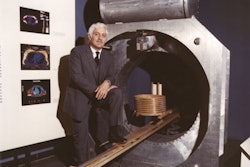

.fFmgij6Hin.png?auto=compress%2Cformat&fit=crop&h=167&q=70&w=250)


